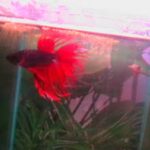Sand dollars are flat and round or oval marine animals. They are echinoderms due to that they have spines. These spines aren’t pointy in which would poke you, they are actually very soft. The are related to creatures such as the sea cucumber and the star fish. Many think that sand dollars are white however this is only when the sand dollars is dried out from dying. The whitish color is just the thick skeleton of the sand dollar. These remians are commonly found on the beaches. Most sand dollars comes in different shades of purples.The living sand dollar can’t live long at all on the beach due to that it needs salt water. Sand dollars are harmless to humans therefore if you find a live one on the beach, you can simply place it back into the water. It will begin to bury itself in the sand right away.
Sand dollars live on ocean floors. They live beneath the sand or mud in the shallow tidal waters along coastal lines. You may find them laying flat or pushed in the sand in about a 45 degree angle. Sand dollars tend to hold themselves in place by laying flat or by burring themselves in the sand in this 45 degree angle to help keep them from being pushed out of the water. Sand dollars are easily carried by tidal waves therefore they also will eat alot of sand to help weigh them down.
Sand dollars are usually found among many of other sand dollars. If you notice a few sand dollars sticking out of the ocean floor, all you have to do is look around them. You will then notice more and even more sand dollars in that area. There can actually be a hundred or more in the general area. I was shocked to discover this, there were so many in which made me feel bad for walking thru them to get into the deeper water.
There are not just one kind of sand dollar, actually there are several kinds. A few examples of these different types are the arrow head, flat round and pancake. Sand dollar species differ in their shape, shade of color, size and the design of their pattern. Sand dollars are either female or male. They can live for about ten years.
Two things help protect the sand dollars. The first is the sandy or muddy ocean bottoms. They can easily bury themselves in it to hide from predators. However this isn’t don’t quickly instead is done in a very slow motion. Sand dollars also have a very hard exoskeleton in which several creatures cant get thru. Sand dollars are often swept up and carried out of the water by birds. The birds will carry them to dry land and then will peck the sand dollars open.
The alive sand dollars have a furry look. The body is covered by short purplish hairs in which are called spines. The sand dollar uses these spines for burying itself as well as for moving very slowly. These spines expand and spread outward to move the sand dollar. This is very interesting to actually see as they begin to spread. The center of the sand dollar will then bubble outward and the sand dollar will slowly begin to move. It seems as if takes sand dollars forever to move or bury itself. I attempted to capture the burring process on my camcorder but my arm became very heavy and the process became unsuccessful.
They also have tube feet in which aren’t feet in which we are accustomed to. These feet do not move the sand dollars. Rather they are muscles used for breathing and eating. These tube feet create a pattern on the top and bottom of the sand dollar. This pattern is only noticed when the sand dollar is dead. When alive the hairs hide their pattern. These spines fall off when the sand dollar dies and reveals the pattern.
Sand dollars will eat materials such as marine plants, plankton and mussels.The tube feet pass food to the sand dollars mouth. The mouth of the sand dollar is on the bottom of the creature and it eats as it moves. They catch food particles with the spines on their body. Then the food is caught the spines move together to hold the food there. The process repeats as it makes its way slowly to the sand dollars mouth.
For additional information on sand dollars please visit the following links:
www.montereybayaquarium.org
www.gma.org
www.animals.howstuffworks.com
www.enchantedlearning.com
www.seashellworld.com




